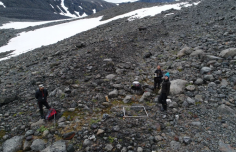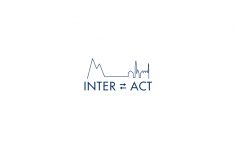Encompasses all the ways in which ice mass is lost from the surface of a glacier or ice sheetA mass of glacial land ice extending more than 50,000 square kilometers (20,000 square miles). The two ice sheets on Earth today cover most of Greenland and Antarctica and together... More, such as melting at the surface or the base (underside), and evaporation. However, ablationEncompasses all the ways in which ice mass is lost from the surface of a glacier or ice sheet, such as melting at the surface or the base (underside), and evaporation. However, ablation... More does not include loss due to ice flow. The opposite of ablationEncompasses all the ways in which ice mass is lost from the surface of a glacier or ice sheet, such as melting at the surface or the base (underside), and evaporation. However, ablation... More is accumulationEncompasses all the ways in which a body of ice (a glacier or ice sheet) gains mass at its surface, such as snowfall and rime formation. However, it excludes ice... More. Rates of ablationEncompasses all the ways in which ice mass is lost from the surface of a glacier or ice sheet, such as melting at the surface or the base (underside), and evaporation. However, ablation... More and accumulationEncompasses all the ways in which a body of ice (a glacier or ice sheet) gains mass at its surface, such as snowfall and rime formation. However, it excludes ice... More affect the mass balance of a glacierA glacier is a large, persistent body of land-based ice that forms over many years where the accumulation of snow is greater than its loss (ablation). The ice in a... More.
Related contents
-
> Tune in to the INTERACT Arctic Research Blogs
NewsWhen things slow down during the summer holiday season, in arcticDefinitions of the ArcticDefinitions of the Arctic vary according to environmental, geographical, political, cultural and scientific perspectives. Some scientists define the Arctic as areas having a high latitude, long winters, short, cool summers,... More vary according to environmental, geographical, political, cultural and scientific perspectives. Some …
> Read more -
> Mass balance
GlossaryThe difference between the amount of ice a glacier gains in winter and the amount lost in summer. A glacierA glacierA glacier is a large, persistent body of land-based ice that forms over many years where the accumulation of snow is greater than its loss (ablation). The ice in a... More is a large, persistent body of …
> Read more -
> Glacier
GlossaryA glacierA glacierA glacier is a large, persistent body of land-based ice that forms over many years where the accumulation of snow is greater than its loss (ablation). The ice in a... More is a large, persistent body of land-based ice that forms over many years where the accumulationEncompasses all the ways in which a body of ice (a glacier or ice sheet) gains mass at its surface, such as snowfall and rime formation. However, it excludes ice... More of snow is greater than its …
> Read more -
> Accumulation
GlossaryEncompasses all the ways in which a body of ice (a glacierA glacierA glacier is a large, persistent body of land-based ice that forms over many years where the accumulation of snow is greater than its loss (ablation). The ice in a... More is a large, persistent body of land-based ice that forms over many …
> Read more


